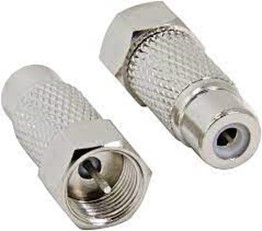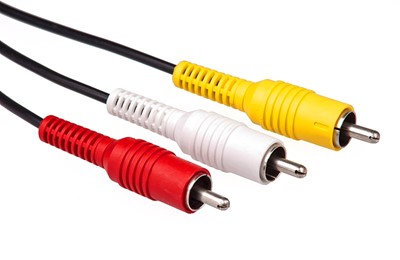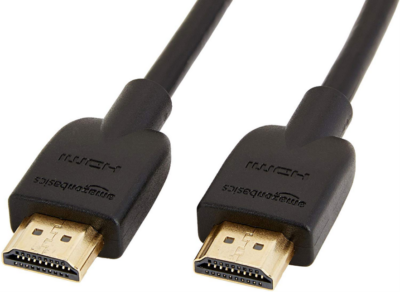
Gaming consoles and televisions have changed significantly over the past 50-odd years as technology progressed and consumer demands changed. As these devices became more advanced, the technology necessary to connect them also changed, sometimes so drastically that it would become impossible to connect older devices to newer ones without the use of special adapters or intermediary cabling.
Throughout the generations of gaming consoles, video cables have largely come in four varieties: Radio Frequency Switchbox, Coaxial, Component, and HDMI.
RF(Radio Frequency) Switchboxes
First seen among the “Pong Machines” and first generation of gaming consoles of the mid-1970s and early 1980s, the RF Switchbox was the first way that these devices could connect to a television. The console’s video cable would connect to this switchbox, which would feed the video input through to the pair of metal forks visible here. These forks would then be screwed into place beneath the antenna screws of the television, and the user could use the box to swap between the normal antenna input and the input of the console itself, using the wiring within the box to splice the console’s signal directly through the TV’s antenna input. These switchboxes, however, were notoriously bothersome and finicky, requiring multiple steps to achieve an often-unstable connection.

RF Coaxial Cables
As televisions evolved, they soon began including direct RF ports that consoles and other devices could plug into directly, bypassing the need to splice through the antenna’s input entirely. These ports were often threaded on the outside, allowing the cables’ threading to achieve a significantly more stable connection than the switchboxes used previously. These cables (and their adapters) would still be used among the first generation of consoles and devices alongside them, as RF adapters could often be placed directly onto the video cable of these consoles and plugged into the TV. These, too, however, would be rendered obsolete with the introduction of the next item on this list.

Component Cables
Largely introduced to consoles with the NES in 1983, Component cables were an evolution of the already-common Composite cabling that had been in use for several decades. While a composite cable carried video and audio output through one cable, Component cables split this audio and video output into three separate cables, often color-coded (and often specifically red, yellow, and white). Splitting the output this way significantly increased the quality of both the video and audio and would quickly become the standard for game consoles for the next 20 years; even the Wii, introduced in 2006, would still use them. These cables are still used today, but like the others, have largely been obsoleted by newer, more modern cabling.

HDMI
While HDMI cables were invented in the early 2000s, it would not be until the early 2010s when they would come into standard use among most devices and consoles. The most significant change that HDMI cabling brought to consoles and devices was the change from analog to digital output, a change that significantly increased audiovisual fidelity over the older composite cabling while reducing the amount of cabling necessary. HDMI cables have not stopped evolving, either, with successive generations of cables capable of carrying more data faster than their predecessors. Just about all consoles and devices use HDMI cabling today.

Student blogger Joshua Peters holds a BS in Biology and is currently pursuing a Library Science Master’s degree. This is his first semester working in Media Services as well as his first blog post for Media Beat.
Sources Consulted for additional Information:
Watkins, Nicholas(2019, April 18). “History of Video Cables”. Show Me Cables.com [Blog post]. Retrieved from https://www.showmecables.com/blog/post/history-of-video-cables
Leave a Reply